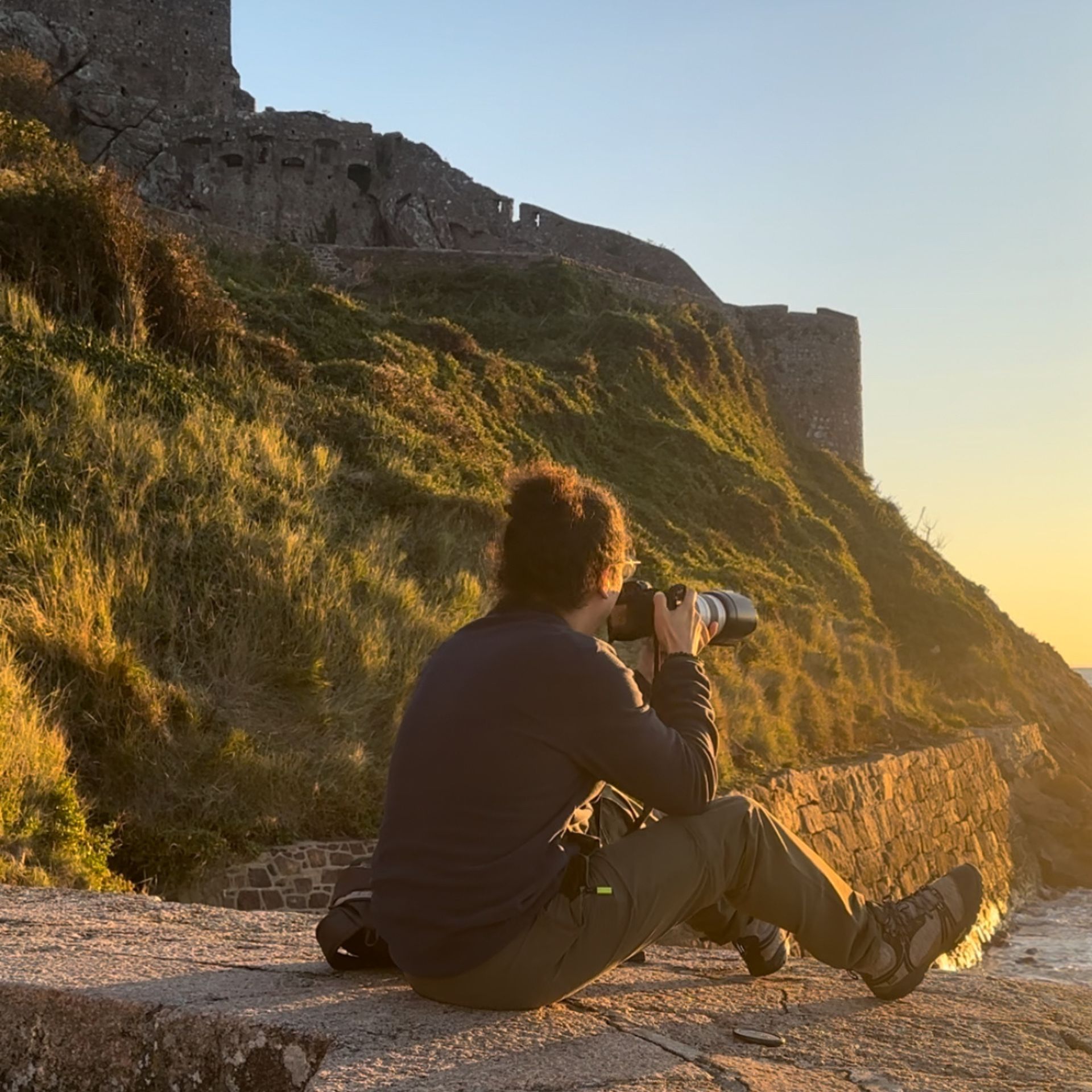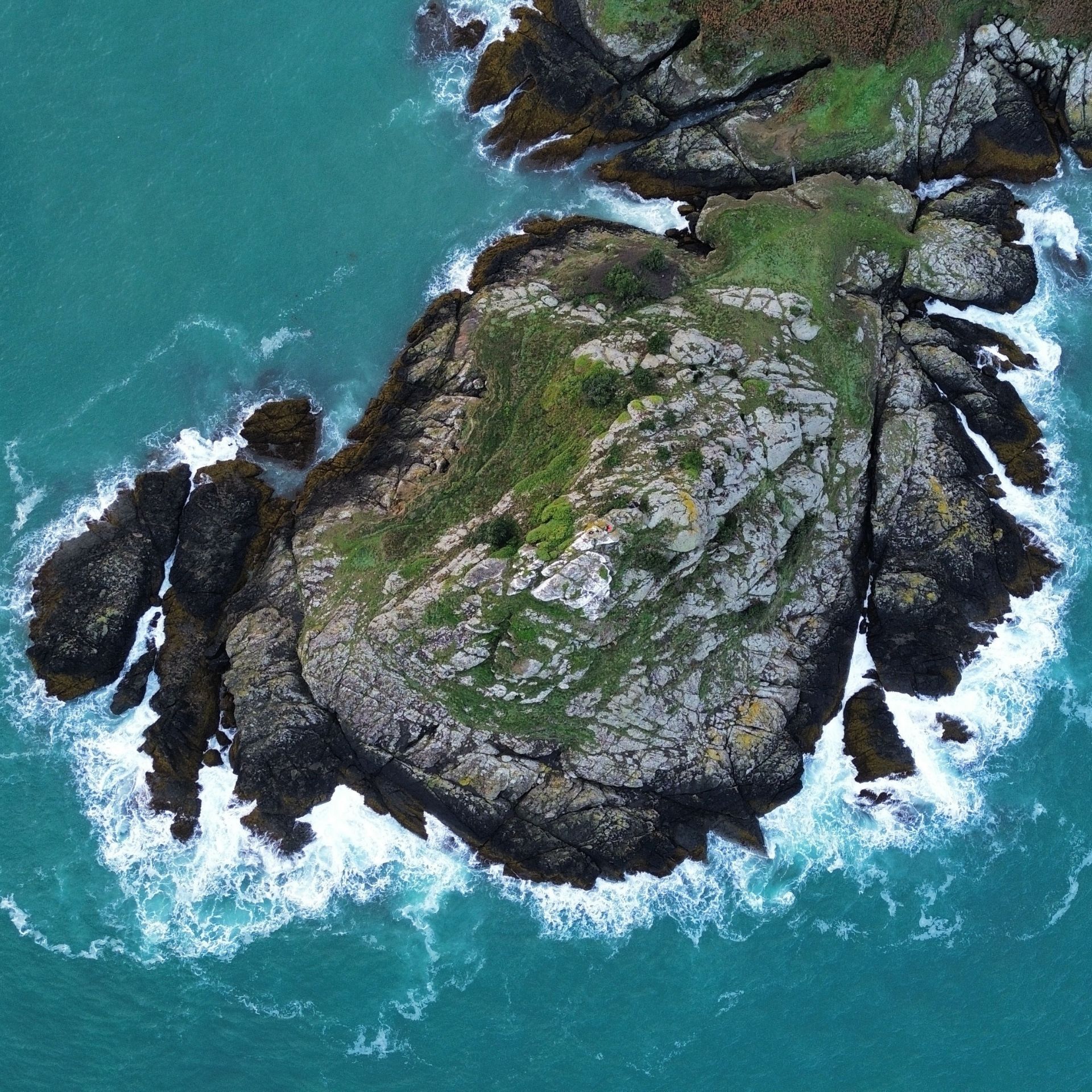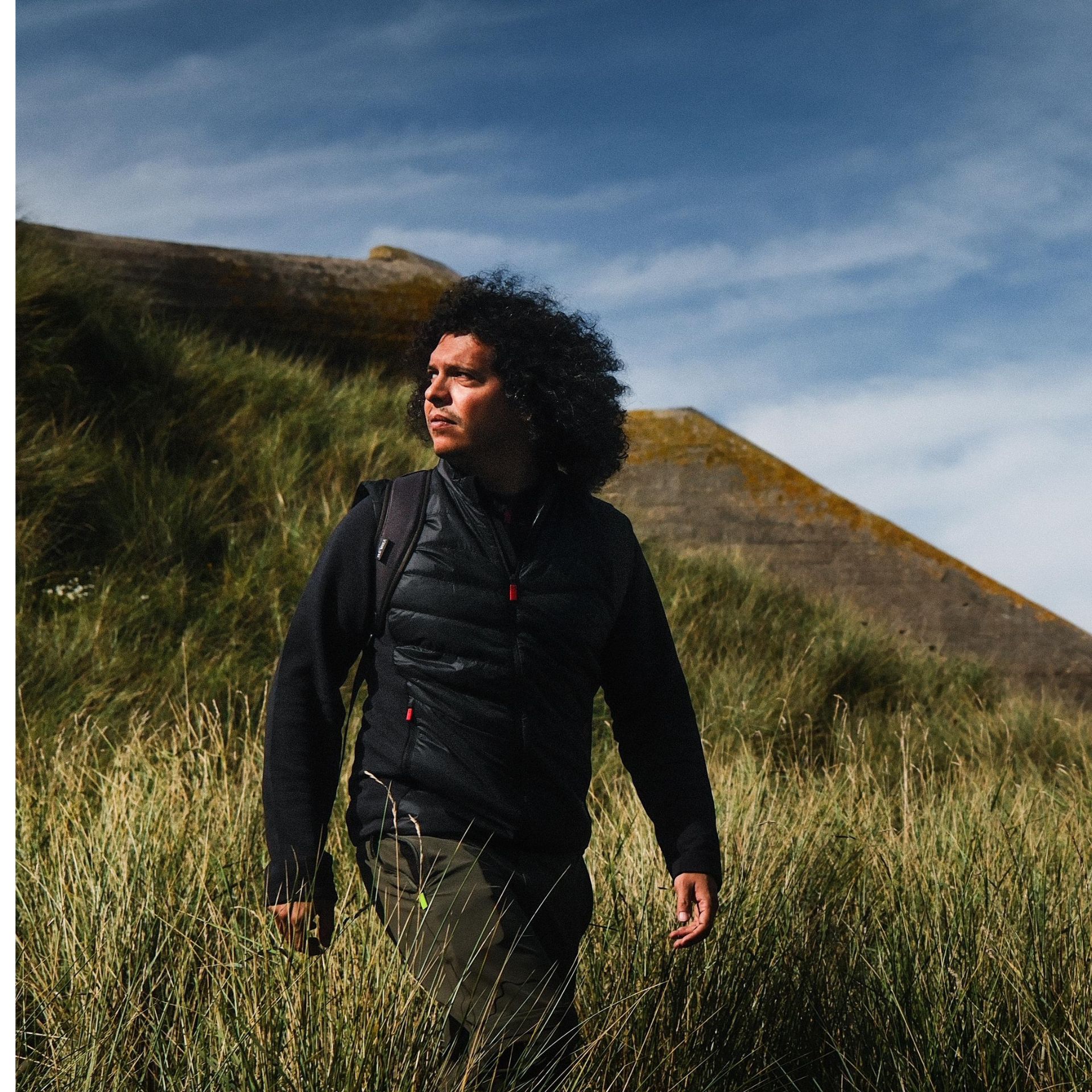Named as one of the most extraordinary hikes in the world, the Alta Via 1 in the Dolomites is an adventure any hiking lover should experience at least once in a lifetime.
After emerging from an extinct tropical sea around 70 million years ago, the sharp limestone peaks of the Dolomites are some of the most beautiful alpine landscapes in the world and a paradise for adventure lovers. They are declared a natural World Heritage Site by UNESCO since 2009 and no wonder why. There are hundreds of hiking and climbing routes full of astonishing views of narrow valleys, snowy peaks and mountain ranges as far as the eye can see.
Hikers and climbers from all over the world come each year to marvel and explore this wonder or nature and in order to really experience the magic of the Dolomites, a multiple day trekking such as the Alta Via 1 is the choice to go.
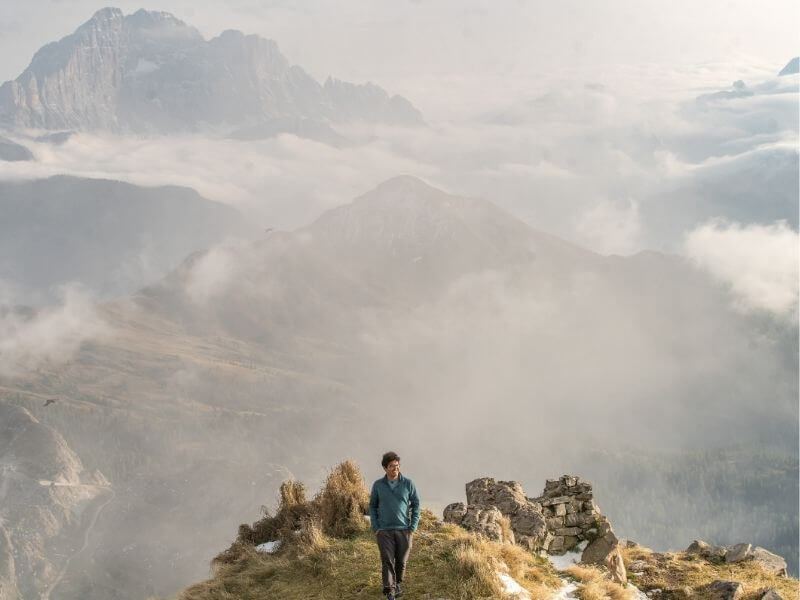
Hiking over the clouds
Known as the Dolomite High Route 1 or simply Alta Via 1, this multi-day hiking route consist of 11 different stages over a distance of around 120 km. It is the most famous and popular route of the Dolomites, but also the one with the most impressive views.
It takes an average of 8-12 days to complete and while it crosses some of the highest areas of the Dolomites, no alpine or climbing knowledge is required. The routes are also very well signalized and in good weather conditions, they are a very comfortable hike for all levels of fitness.

How to get here
As I have mentioned in several articles before, the best way to explore the Alps is renting a car or moving around with your own vehicle. Unlike many other parts of Europe, the Alps (incluiding the Dolomites) have only few train stations to the most beautiful areas and bus connections not only take ages but also can be a little bit unreliable.
Unfortunately, visiting the Dolomites for a hiking trip to the Alta Via 1 might be the exception to this rule. The beginning and the end of the route (Lago di Braies and La Pissa Bus Station) are very far from each other and therefore, bringing your car still means you need to get around using public transportation.
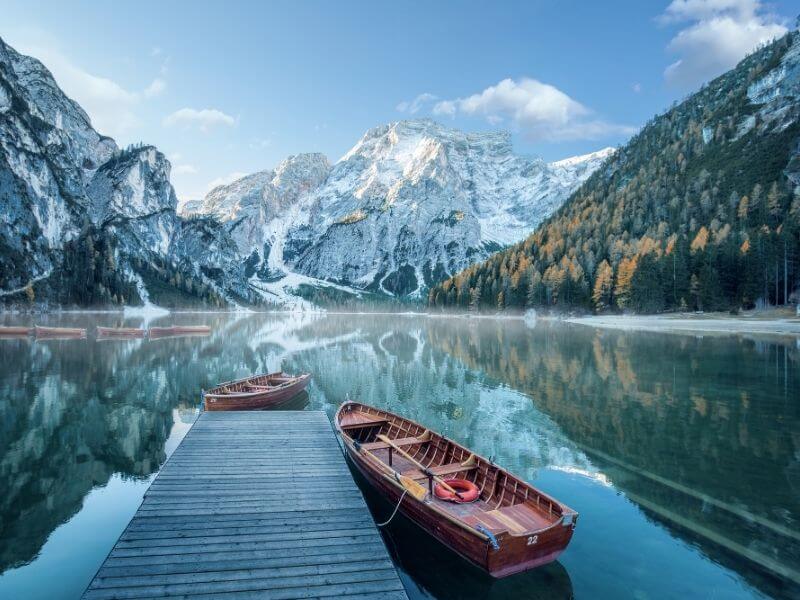
Dolomites by public transportation
But don’t worry, the closest, and best connected, train station to the Alta Via 1 is in the town of Dobbiaco. It has direct connections from Innsbruck, Venice, and Munich and is located just several kilometers away from the Lago di Braies. Once there, buses depart regularly and leave you right at the lake.
Once you finish the trek, the La Pissa Bus Stop is located 20 minutes from the town of Belluno. Here, there are busses connecting to different parts of the Dolomites, as well a train station if you are planning to travel a little further. Of course, you can also start your trek at La Pissa and end in Lago di Braies if you find it more convenient.
NOTE: For exact connections and timetables, Google Maps is usually my preferred choice. Also, bus timetables are displayed in the first and last couple of rifugios of the trail.
Exploring the beauty of the Dolomites independently
With snow covering most part of the route during winter, the best season to visit the Dolomites and hike the Alta Via 1 is between the months of July and September. This is also the time when most rifugios start to open and the weather is perfect for being outdoors.
With no particular permits to apply beforehand and no need of a mountain guide, the routes at the Alta Via can be crowded. Furthermore, with high season welcoming hundreds of visitors every day, search of accommodation can become quite difficult at this time of the year if you have not booked in advance.
Take into consideration that the rifugios have usually 9-12 rooms and get very quickly booked in advance. Moreover, while the Dolomites might sound like the perfect spot for wild camping, this activity is completely prohibited and you will get fined if you get caught.
Read more: Types of signs at the hiking routes in the Alps
Read more: Which are the best activities in the Dolomites
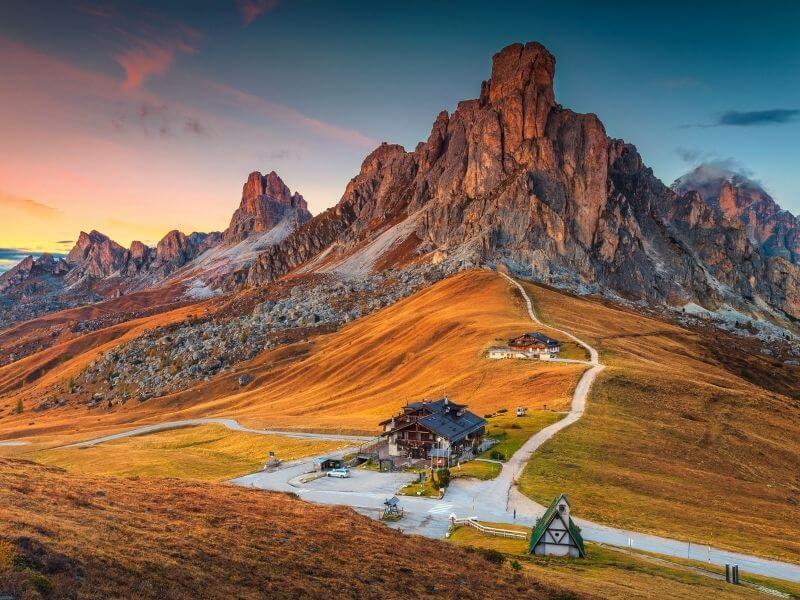
NOTE: Resevations for the rifugios are not required. However, I strongly recommend you to book in advance. Rifugios known for their majestic best views, such as Lagazuoi, can get fully booked up to 6 months in advance.
If you plan this journey in advance and at the right time, this could be the trip of your lifetime.
The route offers so many panoramic views and places to be just by yourself and in contact with nature. This is only one of the many routes you can do in the Dolomites, but there is a reason why this one shows up each time you search online. It is really one of the most beautiful treks in the world and no matter what level of experience you have or how well traveled you are, the Alta Via 1 will leave you more than one time speechless.
Read more: Planning the ultimative road trip in the Alps
Read more: How to plan a road trip through the High Alpine Road of Austria
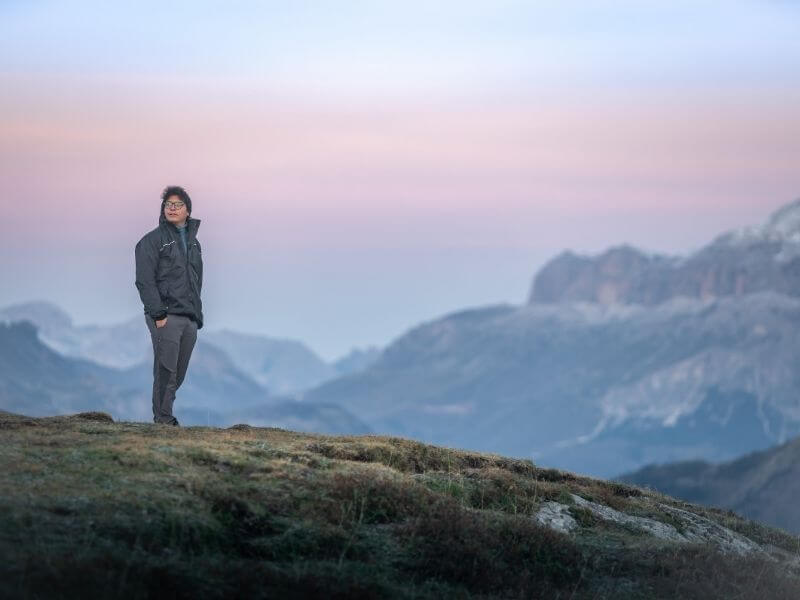
Alta Via 1 in a nutshell
- Duration:
8 -12 days - Distance:
120km - Average
travel length per day: 4-5 hours without stop - Start/End:
Lago di Braies/La Pissa Bus Stop - Total
elevation gain: 6,705m - Level
of fitness: average/moderate - Costs
per overnight stay: 70-90 EUR per room - Cost
per meal on a rifugio: 8-15 EUR without drinks - No
permits are required to do the hike
Can I explore only a single stage of the Alta Via 1
Of course, scenic spots like the viewpoint at Rifugio Lagazuoi can be reached after a 3 hour hike from Passo Falzarego or by taking the cable car from the same spot. This is a very popular day trip if you have your own car and are staying in Cortina.
You can also visit by car some of the most scenic spots of the route such as Cinque Torri or Passo Giau and explore the area for the day. Other activities in this part of the Dolomites incluide climbing, ferratas or cycling.
Also, you can also do only some sections of the Alta Via and start in spots where a bus might easily take you (Passo Giau, Passo Falzarego).
Read more: Which are the best mountain landscapes of Europe
Read more: How to visit the Ice caves of Austria
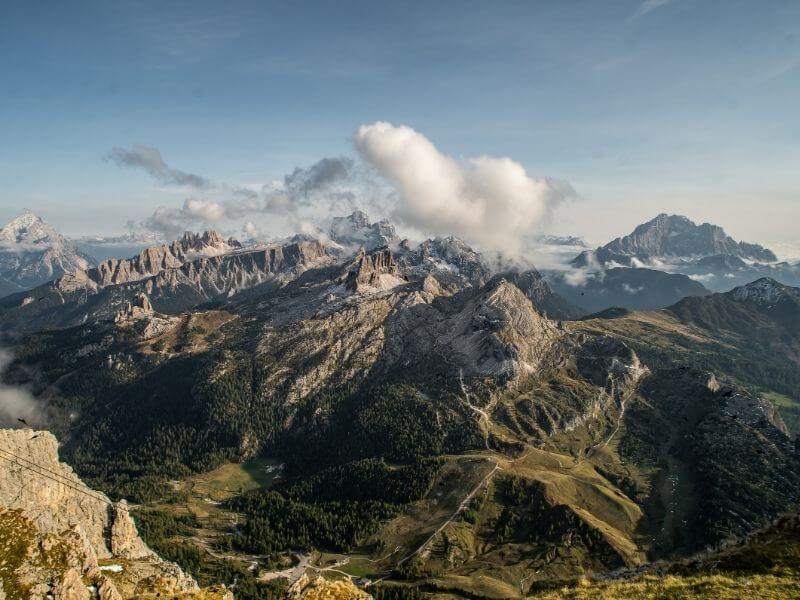
Feeling more active?
The Alta Via 1 is definitely one of the best multi-day hiking routes of the Dolomites. However, with a length between 8-12 days to complete, this is a very long route and if you are planning to visit the Dolomites for just a week or less, this might not be your best choice.
Another scenic and more active route of the Dolomites is the Cortina Dolomiti Ultra Trekking route. It starts and finishes in the town of Cortina, covers a total distance of about 132km and also passes through some of the most beautiful sceneries of the Dolomites. The route takes 7 days and 6 nights to complete and even though it is way harder than the Alta Via 1, it is the best choice for those who have more experience hiking in the mountains.
The Cortina Dolomiti Ultra Trekking can also be undertaken in a shortened version. You can choose between a two days of trekking with one night in a mountain hut, or a three days of walking with two nights in a mountain hut for a longer weekend.



